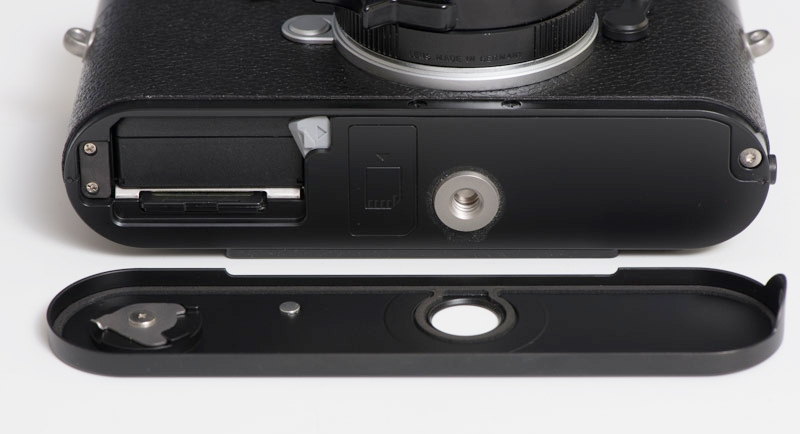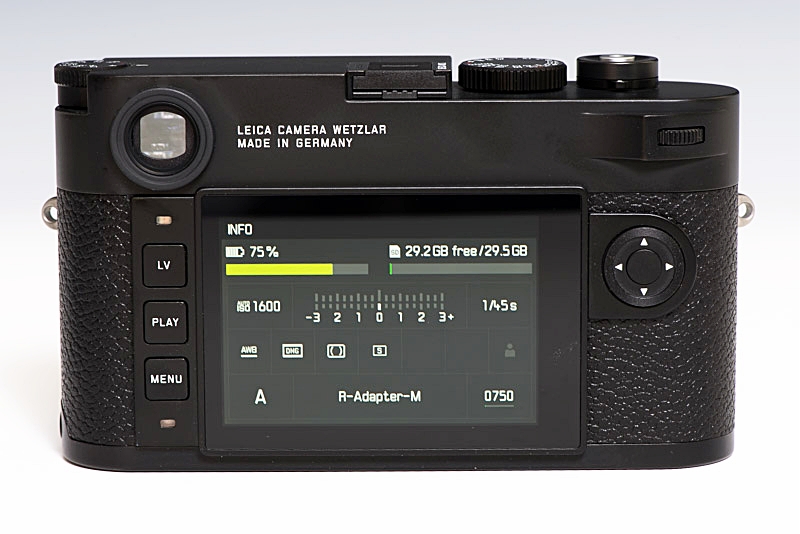The evolution of the digital M series camera is complete with the introduction of the Leica M10. What started with the Leica M8 in September 2006 and continued with the announcement of the Leica M9 in September 2009 to the Leica M(240) in September 2012 has culminated in the Leica M10. The Leica M10 is logical evolution of the wildly popular M(240). This is the camera that the Leica community has wanted since the announcement that Leica was going to port the rangefinder system to the digital world.
After getting a feel for the camera and shooting some images that I took back to my Mac to inspect I added my name to the waiting list at the Hollywood Leica store. I was quoted 6 months before I would get my camera. I was surprised when just over 3 months later I received a message that my camera was ready for pickup. After a false start because of 2 small defects I picked up another camera and I stared testing my new camera. I still have my Leica M(240) so the M10 was my backup until I was comfortable with how it performed in different situations.
If you have ever handled a Leica M series camera before the first thing you will notice is how much smaller and lighter the camera is compared to previous Leica digital cameras. In fact the camera has the same thickness as the famous M4 from the 1960’s. The cameras dimensions are 139mm x 38.5mm x 80mm and weighs 660g. Compare this to the previous model the M(240) at 139mm x 40mm x 80mm and weighs 680g. It feels much smaller and lighter in the hand than the numbers make it sound. With the smaller size comes a smaller battery. I have always carried two batteries with my cameras so that is not that big of a deal. The M10 batteries are smaller and I been getting about 500-600 exposures per charge. Compare that to about 800 exposures with my M(240). I don't consider that a big deal, I have not had a problem getting through the day with 2 batteries.
In actual use the biggest surprise for me with the M10 has been the viewfinder. It is spec’d at 30% larger and in use it really is easier to use. I wear glasses and I don't have to shift my eye around to see the full frame when using wide angle lenses. I also seem to have a much higher rate of keepers because the camera really is easier to focus. The previous cameras have had viewfinder magnifications from .68 to .72 so the .73 on the M10 which gives a 50% increase in viewing distance which is great for eyeglass wearers. . It also is easier to see the 28mm frame lines. I zone focus frequently with wide angle lenses but I do most of my shooting with a 50mm in close so I actually focus the lens for most images. Most people are advised to use zone focusing all of the time when switching to Leica. I come from the days of film so I have lots of practice manually focusing. Even since the switch to autofocus I usually manually focus for portraits.
At first glance the most obvious change to the M10 is the switch to a manual knob for setting the ISO. It is nice to know what the ISO is set at when picking the camera up but as far as changing the speed I prefer the old method of holing the ISO button and spinning the thumb wheel. The ISO knob is set by lifting from the base and the turning to the desired ISO. When I first got the camera I had some difficulty with the dial, turns out it is harder to pull up when grabbing at the top. Better to grab the base. The ISO dial indicates speeds from 100-6400. When going into the menus the speed can be changed up to 50000. I set the “M” to ISO 800, that is my sweet spot for high speed that still keeps the grain at a minimum and still has good IQ.
The layout for the controls are pretty spartan on “M” cameras and the M10 is no different. Looking at the camera from the front the most obvious feature are the rangefinder windows. The Leica red dot is proudly placed in the top center but I usually use black tape top cover mine. The Lens selector arm has returned so that you can preview the frame lines for the different lenses. The lens release button is at the 9:00 position on the lens mount. The focus button for setting the exposure compensation and other features. On the top is the shutter release button, the on/off switch, the shutter speed dial, and the flash shoe and ISO dial. The back has the rotary dial, the 4 way pad with center button, the Menu/preview LCD, and the Live View, Play and Menu buttons. The bottom is removed to access the battery and the SD card. The SET and ISO buttons have been removed from the previous cameras which makes the back of the camera very minimalist.
The camera uses a new sensor that is the same 24MP as the previous model but with the new second generation image processor gives a little better quality image. In my opinion the sensor is about 1 1/2 stops better than the previous M sensor. It is similar to the sensor in the Leica SL or the Leica Q and a vast improvement over the M9 CCD sensor. I really do like the look of the M10 sensor. It has a rich color fidelity and accurate skin tones. Much was recently made about the quality of the Leica sensor and how it compares to the Nikon, Canon and Fuji sensors. I agree it might be slightly behind but for me it is the whole package that counts the most and I simply prefer the Leica rangefinder system.
The M10 has a lot of little refinements. It is better sealed against moisture and dust. It is not waterproof. It still has the Gorilla Glass the protects the LCD. The Menu system can now be organized into favorites. When I go into the menus it seems that I only change a handful of settings so this has turned out to be a real timesaver. Wi-Fi connectivity is now an option for transferring images and controlling the camera. The LEICA M-App is available for iOS and Android. The app runs on the iPad natively and is smooth to work with. Live view and focus peaking have been refined for a better experience. The on/off switch has eliminated the “C” option for continuous shooting which can be modified in the menus. Leica has chosen to remove video recording from the Leica M10. I personally think this is a good decision. Video recording is just not something I want to do with a rangefinder camera. I have dedicated cameras for video and I just don't see a M10 user wanting to record video.
In use the camera is responsive and produces excellent images. With the image buffer increased to 2GB you can get 30-40 raw images before the buffer slows the camera down. I like that there are only 3 function buttons on the camera. This streamlines the look of the camera and makes it feel more like a Leica experience. Yes some wish that Leica had gone to a 36MP sensor. I'm happy with 24MP. More slows more computer down and 24MP is just fine for prints up to 24 x 36. The M10 is so much lighter than the M(240) that when I carry one on each shoulder I subconsciously know which side is which, the M10 feels that much lighter. And after a long day that adds up. But enough of the camera functions, how about the results. the M10 files are easy to work with. As with all of the Leica digitals, don't overexpose. Leica files seem to like a little under-exposure. I have been printing my M10 files on my new Epson P800 and I must saw I am impressed. The prints are sharp with saturated colors.
Now for the question that previous Leica owners want answered. Should you update to the M10. For M9 owners I say it is an easy choice, yes. The M10 CMOS sensor is a big improvement over the M9 CCD sensor. For M(240) owners it is a tough choice. The M(240) is still a fantastic camera. Only you can make that call. For anyone wanting to jump on the Leica bandwagon, I say go for the M10 and a 35mm or 50mm summicron. You cant go wrong with that combination.




















